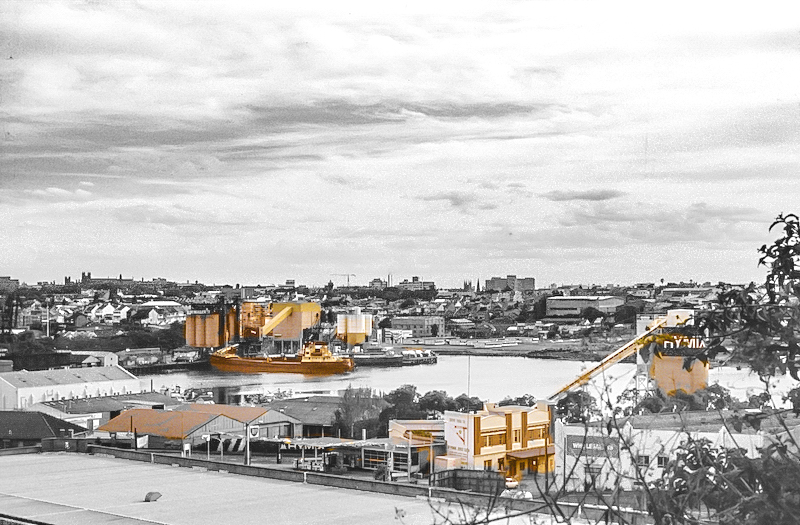Locations > Blackwattle Bay Foreshore
Blackwattle Bay Foreshore
Picturesque Blackwattle Bay, named in 1788, was soon vandalised. In the 1820s lots were bought for slaughterhouses and a distiller: on another lot Pig Mary fed offal to her charges. The bay declined into a foul swamp until the Reclamation Act of 1873.
Wentworth Park was one happy consequence. However, once the foreshore was filled with silt and protected by dykes and sea walls, the new land began to be developed. The enterprises were noisy (timber, cooperage and ship-wrights), smelly (abattoirs, refuse, char) or dangerous (iron works, fuel, engineering), unwelcome closer to the centre of Sydney. Blood flowed from abattoirs, and as late as 1887 sewage was still emptying directly into the bay. This environment did not discourage the hardy sportsmen from their annual regattas.
An 1887 survey found the northern portion occupied by the City Iron Works. Most land from there to Pyrmont Bridge Road was still vacant, but by the 1890s the foreshore was largely alienated to other noisy businesses: the best known were timber (Allen Taylor & Co, and Saxton and Binns). When Thomas Buckle gained premises and acquired more from Matthew Harris, he built a wharf, prompting timber companies and others to do the same, building altogether 15 out into the bay.
Oil companies arrived in the 1900s – British Imperial Oil and Vacuum Oil. BIOC had a depot and a railway siding.
Because much of the site was occupied by warehouses and storage, they employed very few workers. Some relief from smells and noise came when the old garbage disposal pits were replaced by the Burley Griffins’ Incinerator, but it had to be fed by a coal loader at the head of the bay, replacing the old garbage punts.
Until the foreshore area was redeveloped as the Sydney Fish Market, it was a heavy industrial area, best avoided.












